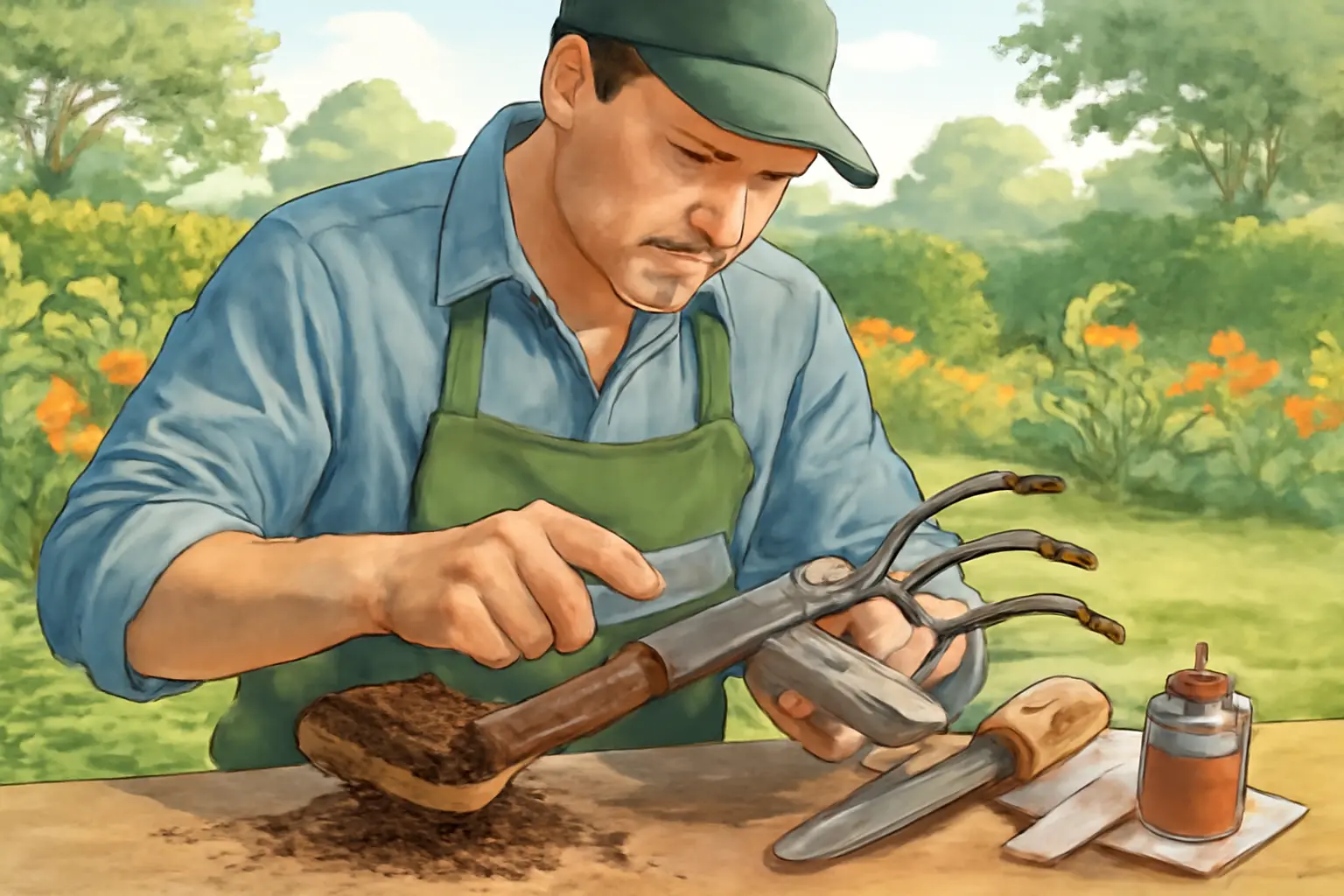Maintaining your hand cultivator in 2025 is crucial for gardeners who want their tools to perform consistently and last longer. Simple tasks like cleaning soil after each use, checking for wear, sharpening blades, preventing rust, and storing the tool properly can make a significant difference. These practices not only protect your investment but also ensure your cultivator works efficiently whether you’re preparing flower beds or vegetable patches. Following a regular maintenance routine helps avoid unexpected tool failures and keeps your gardening tasks smooth and productive.

1. Understanding Hand Cultivator Maintenance
Routine hand cultivator maintenance directly impacts the tool’s performance and durability. Essential tasks such as cleaning dirt and debris after each use prevent buildup that can hinder effectiveness. Regular inspection for loose parts or damage helps identify issues early, avoiding costly repairs. Sharpening the tines keeps soil penetration efficient, reducing strain during use. Rust prevention through drying and applying protective oils safeguards metal components. Proper storage, ideally in a dry, sheltered area, reduces exposure to moisture and contaminants. Together, these practices ensure the cultivator remains reliable and extends its lifespan, saving gardeners both time and expense over time.
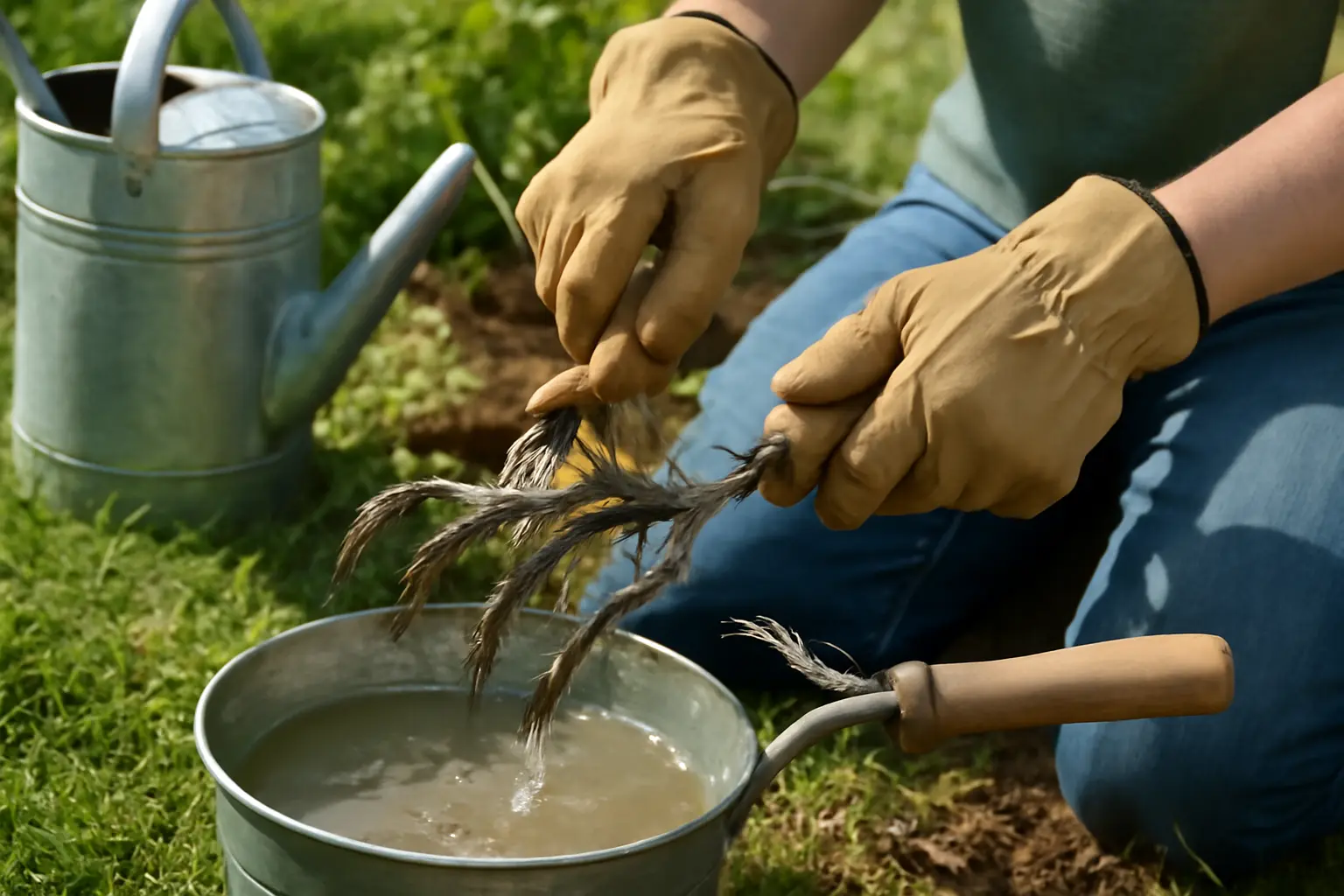
2. How to Clean Your Hand Cultivator After Use
Proper maintenance is essential for extending the lifespan of your hand cultivator, especially when it comes to cleaning after use. Removing soil and plant debris immediately prevents buildup that can damage the tool’s surface. Begin by knocking off loose dirt, then use a stiff brush or old toothbrush to scrub stubborn particles. For sticky residue, a mixture of warm water and mild detergent works well, but avoid soaking metal parts to prevent corrosion. After cleaning, dry the cultivator thoroughly with a clean cloth or paper towel, paying special attention to joints and crevices where moisture hides. This careful drying step is crucial in 2025 to prevent rust formation, which can compromise tool efficiency and durability. Regular maintenance not only preserves the cultivator’s sharpness but also helps it perform better in different soil types, reducing wear over time. By adopting these cleaning practices consistently, gardeners ensure a reliable hand cultivator season after season.
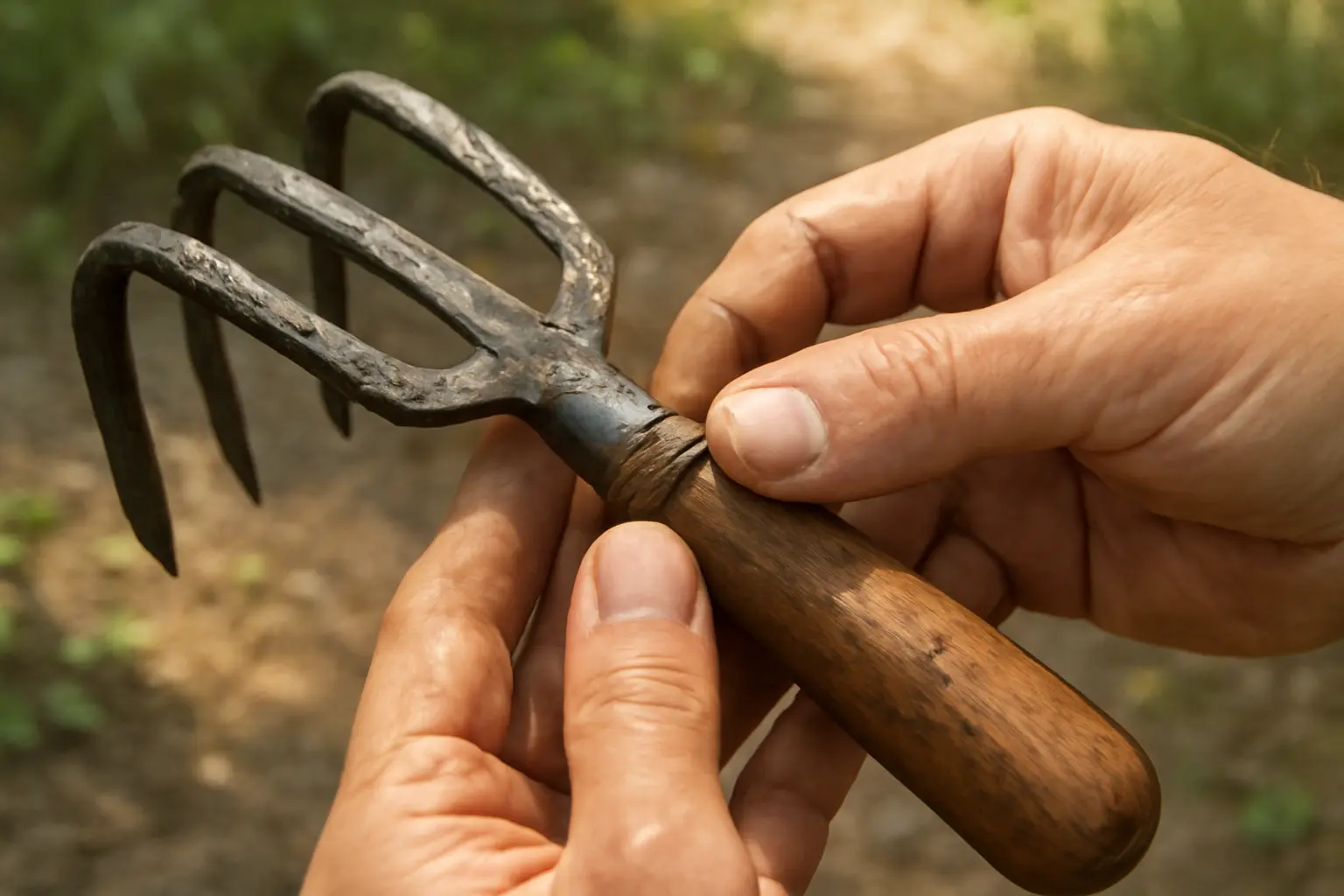
3. Inspecting Your Hand Cultivator for Wear and Damage
Regular inspection is essential for every hand cultivator to remain effective and safe in 2025. Focus on key parts such as the tines, blades, handles, and joints. Early signs of wear include bent or blunt tines, rust spots, small cracks along the blade edges, and looseness in handle joints. For instance, worn tines reduce soil penetration and make cultivating more laborious. A simple test is to wiggle the handle; any movement can indicate joint wear needing tightening or replacement. If you spot deep cracks or severely bent blades, professional repair or total replacement is advisable to avoid injury and maintain functionality. Prioritize hand cultivator maintenance by routinely checking these areas, so minor damage does not develop into costly failures. This approach ensures optimal gardening efficiency and extends your tool’s lifespan.
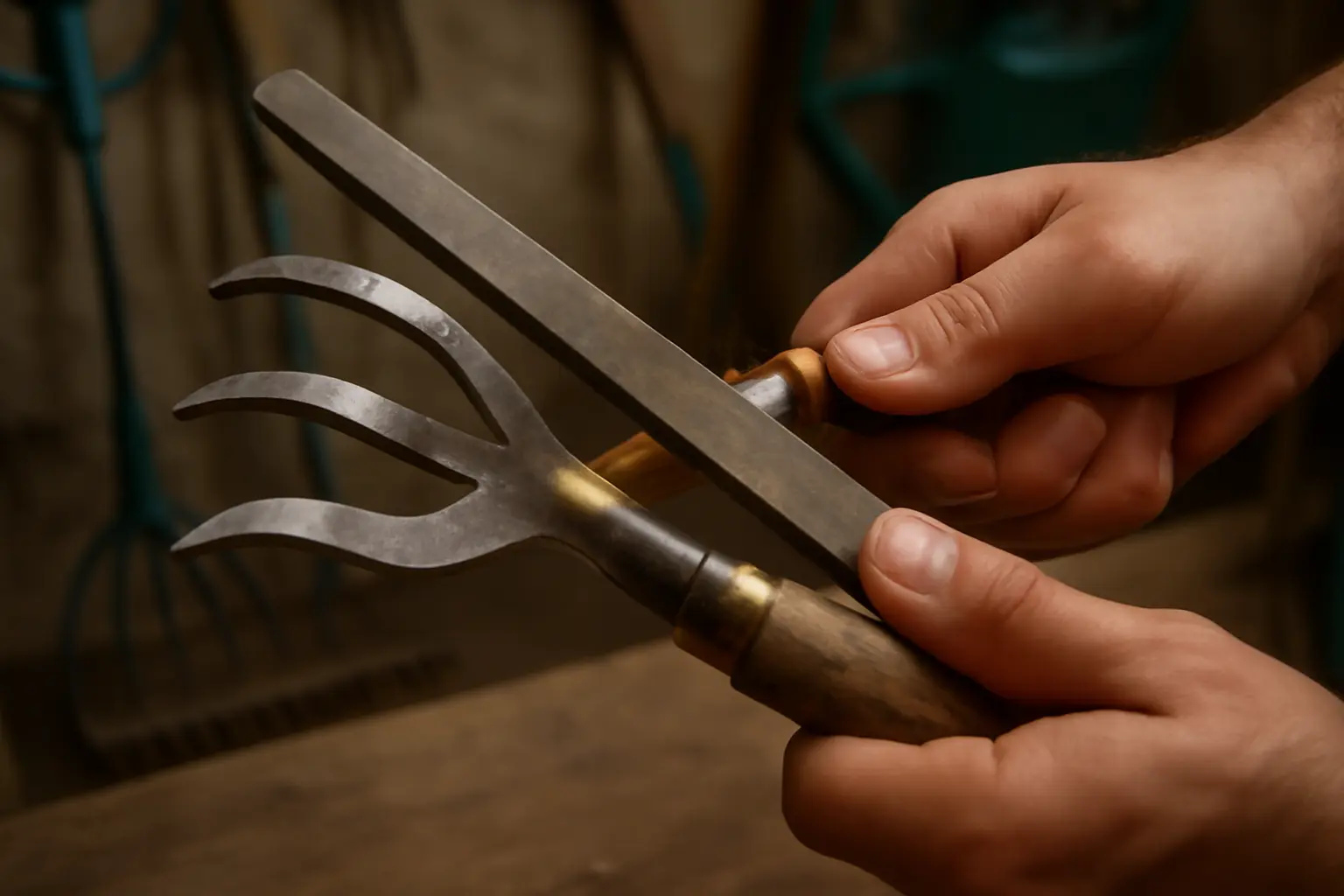
4. Sharpening Tines and Blades: Tools and Techniques
Sharpening the tines and blades of a hand cultivator is essential to maintain its efficiency and ease of use. Sharp tines penetrate soil effortlessly, improving aeration and root growth while reducing user fatigue. For effective hand cultivator maintenance in 2025, selecting the right tools is fundamental. A flat file or a sharpening stone designed for metal works best, offering precise control and durability.
The sharpening process starts with cleaning the tines to remove dirt and rust. Hold the cultivator securely, then sharpen at a consistent angle, typically 20 to 30 degrees, moving in one direction to preserve edge integrity. Use gentle, even strokes, and avoid excessive pressure that might damage the metal. Always wear protective gloves and eye protection to prevent injuries.
Signs that sharpening is needed include difficulty penetrating soil, visible nicks or dull edges, and increased effort during cultivation. Regular inspection after every few uses helps maintain optimal performance. Properly sharpened tools not only increase gardening efficiency but also extend the lifespan of the cultivator, making consistent maintenance a smart investment for any gardener.
5. Preventing Rust and Corrosion
Maintaining your hand cultivator free from rust and corrosion is essential for its durability and optimal performance in 2025. Metal parts exposed to moisture naturally invite oxidation, causing rust that weakens tools and complicates gardening tasks. To effectively prevent rust, it is crucial to adopt a consistent maintenance routine focused on drying, oiling, and protective coatings. After each use, thoroughly dry the metal surfaces to eliminate moisture. Applying a thin layer of oil, such as mineral or machine oil, creates a barrier that repels water and air, slowing oxidation. Protective coatings like wax-based sprays or specialized rust inhibitors offer additional defense, especially when storing tools for long periods. Homemade solutions such as wiping metal parts with a cloth dipped in vegetable oil can also provide temporary protection. For tools showing early rust spots, light abrasion with fine steel wool followed by immediate oiling removes corrosion without damaging the metal. These maintenance steps not only extend the lifespan of your hand cultivator but also ensure it operates efficiently year-round, reducing the need for costly replacements or repairs.
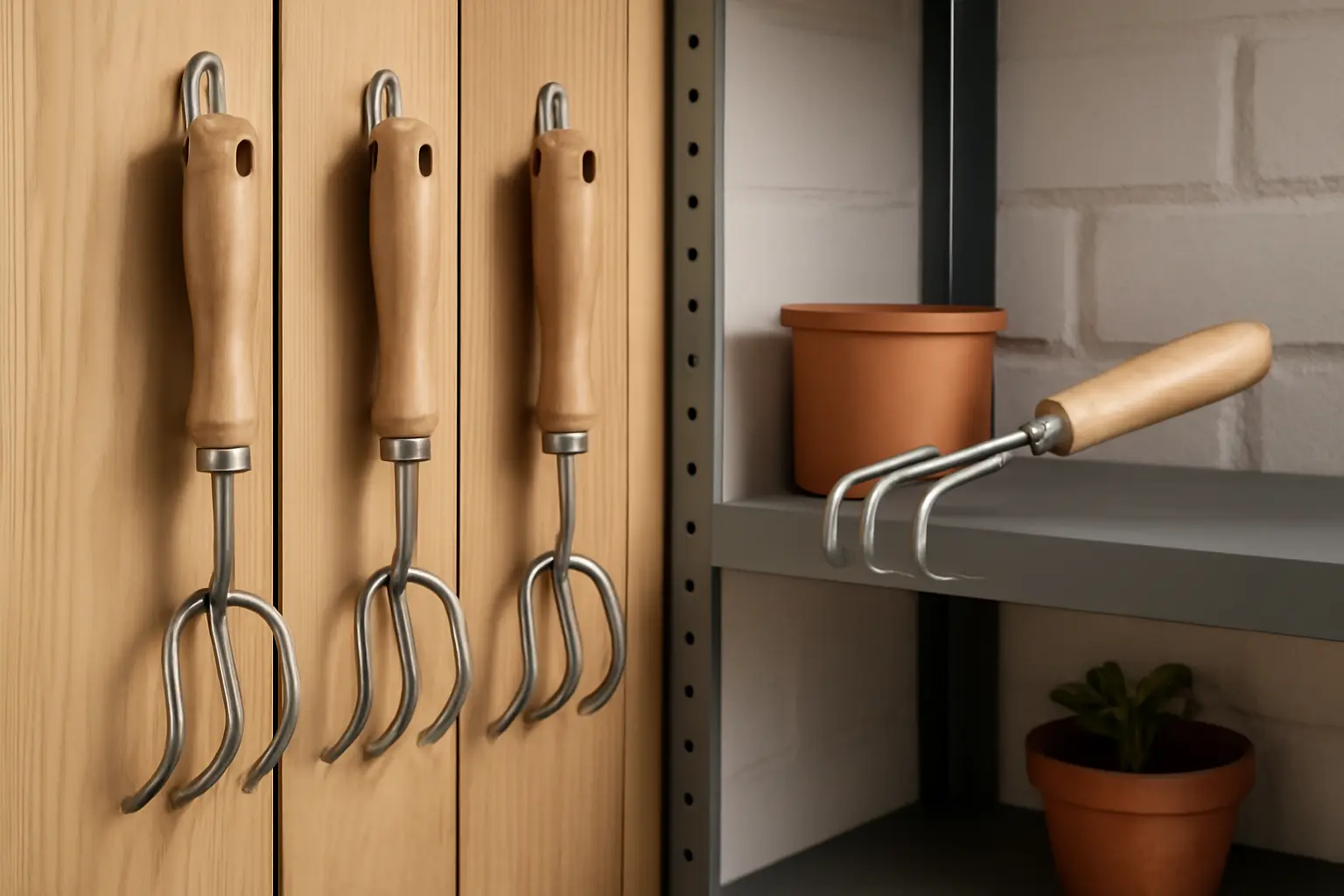
6. Proper Storage Practices for Longevity
Maintaining your hand cultivator properly extends its useful life significantly. In 2025, to optimize hand cultivator maintenance, focus on storage environments that keep the tool dry and protected from elements that cause corrosion or wear. Moisture is a primary enemy, often resulting in rust and weakening of metal parts, which diminishes the tool’s performance.
Key storage practices include:
– Hanging the cultivator on a wall hook or peg to avoid direct contact with the ground, which limits exposure to dampness.
– Using protective covers or cases designed for garden tools keeps dirt and moisture off, maintaining sharpness and preventing debris buildup.
– During seasonal off-use periods, such as winter, clean off all soil and dry thoroughly before storing. Place silica gel packets or moisture absorbers in storage spaces to control humidity.
For example, a hand cultivator stored improperly in a shed floor can develop rust spots quickly, requiring more frequent sharpening or even replacement. Conversely, gardeners who hang their tools and cover them properly notice less maintenance effort and longer-lasting sharp tines. Routine inspection and cleaning before storage complement these methods, ensuring readiness and durability.
Applying these practical storage methods supports your investment in quality cultivators and enhances gardening efficiency year-round.
7. How Often Should You Perform Maintenance?
Proper maintenance of hand cultivators in 2025 involves regular care tailored to your gardening habits. Cleaning after each use prevents soil buildup that can rust metal parts or dull blades. Inspecting the tool every few weeks ensures bolts and handles remain secure and undamaged. Sharpen blades at least once every season to maintain efficiency, especially if frequent cultivation disturbs dense soil or roots. Oiling moving parts once a month protects against corrosion and keeps the tool operating smoothly.
Immediate maintenance is necessary if you notice signs such as:
– Difficulty turning or uneven tines
– Visible rust or corrosion spots
– Loose handles or parts
– Dulling or chipping of blades
A maintenance routine aligned with your gardening schedule not only extends the lifespan of your cultivator but also improves performance, making soil preparation easier. For example, gardeners who work soil weekly should sharpen and oil more frequently than those gardening monthly. This approach reduces downtime and ensures optimal results with minimal effort.
8. Troubleshooting Common Hand Cultivator Issues
Hand cultivator maintenance remains essential in 2025 to ensure efficient gardening and prolong tool lifespan. Bent or broken tines often occur from hitting hard soil or roots; gently straighten minor bends with pliers, but replace severely damaged tines to maintain soil aeration effectiveness. Loose or cracked handles compromise control and may cause injury. If the wooden handle is loose, apply wood glue and clamp until dry; for cracks, sanding and sealing with waterproof varnish can extend usability. Plastic handles with stress cracks usually require replacement to avoid sudden breaks. Quick fixes work for small issues, but persistent problems or structural damage suggest seeking professional repair or investing in a new hand cultivator. Regular inspection combined with these maintenance tips prevents downtime and keeps your gardening on track, ensuring every soil turn promotes healthy plant growth.
9. Expert Tips and Best Practices for Hand Cultivator Maintenance
Maintaining a hand cultivator properly is key to ensuring it performs efficiently and lasts through many gardening seasons. In 2025, with advances in materials, choosing the right oils and cleaning practices has become even more important. Select light machine oil or specialized garden tool lubricants to prevent rust and keep moving parts operating smoothly. Avoid heavy grease that can attract dirt and impair function. Store your cultivator in a dry, ventilated spot away from moisture to extend its service life. Regularly inspect for any loose screws or blade damage, tightening or replacing parts immediately to maintain productivity. Common pitfalls include neglecting to clean soil residue and not drying the tool after use, which accelerates corrosion and wear. For example, gardeners using wooden handle cultivators find that applying linseed oil periodically protects against cracking and splintering. Adopting these simple yet effective practices will keep your hand cultivator ready for the toughest soil and optimize your gardening efforts for years to come.
10. Frequently Asked Questions About Hand Cultivator Maintenance
Proper maintenance of your hand cultivator is essential to ensure longevity and optimal performance throughout the gardening seasons in 2025. Addressing common questions helps resolve everyday concerns efficiently:
– How often should I clean my hand cultivator? Cleaning it after each use is best to remove soil and debris, preventing rust and wear.
– Can I use household tools for sharpening? Yes, simple tools like a whetstone or metal file work well to maintain sharp tines, improving soil penetration.
– What oils are best for rust prevention? Applying light machine oil or mineral oil regularly keeps metal parts protected without attracting dirt.
– How to tighten loose handles safely? Use a sturdy wood glue or replace damaged screws to secure the handle firmly, avoiding damage during use.
These practical tips support effective hand cultivator maintenance, helping you keep your tool reliable and efficient in everyday gardening tasks.






